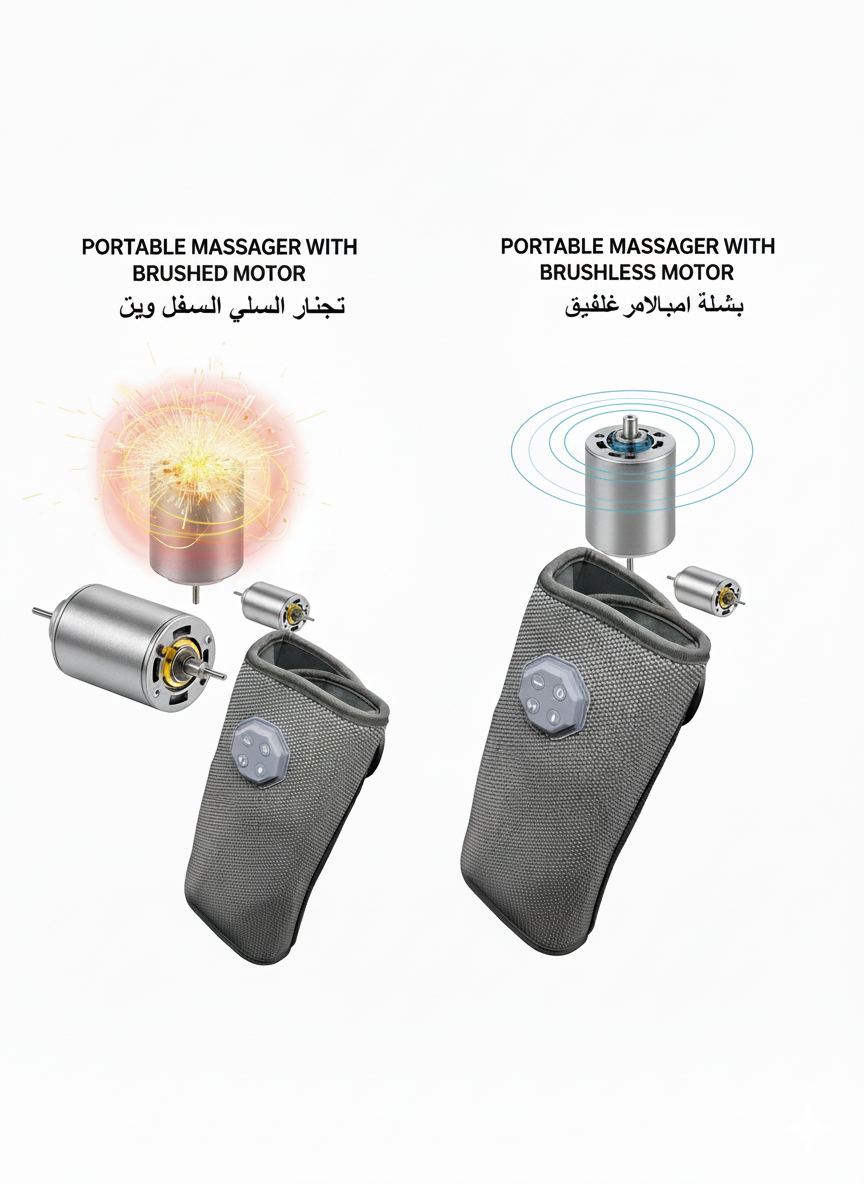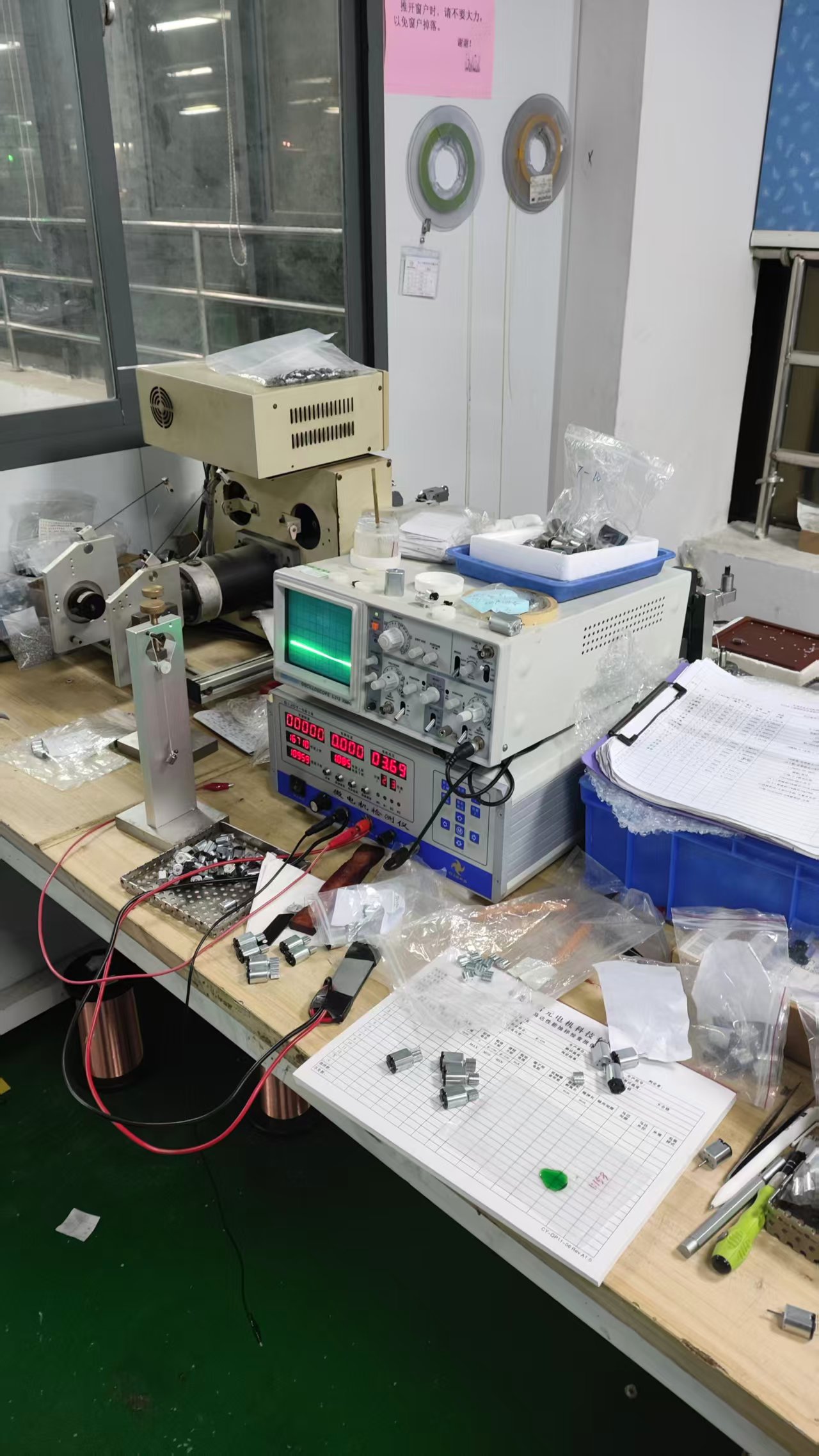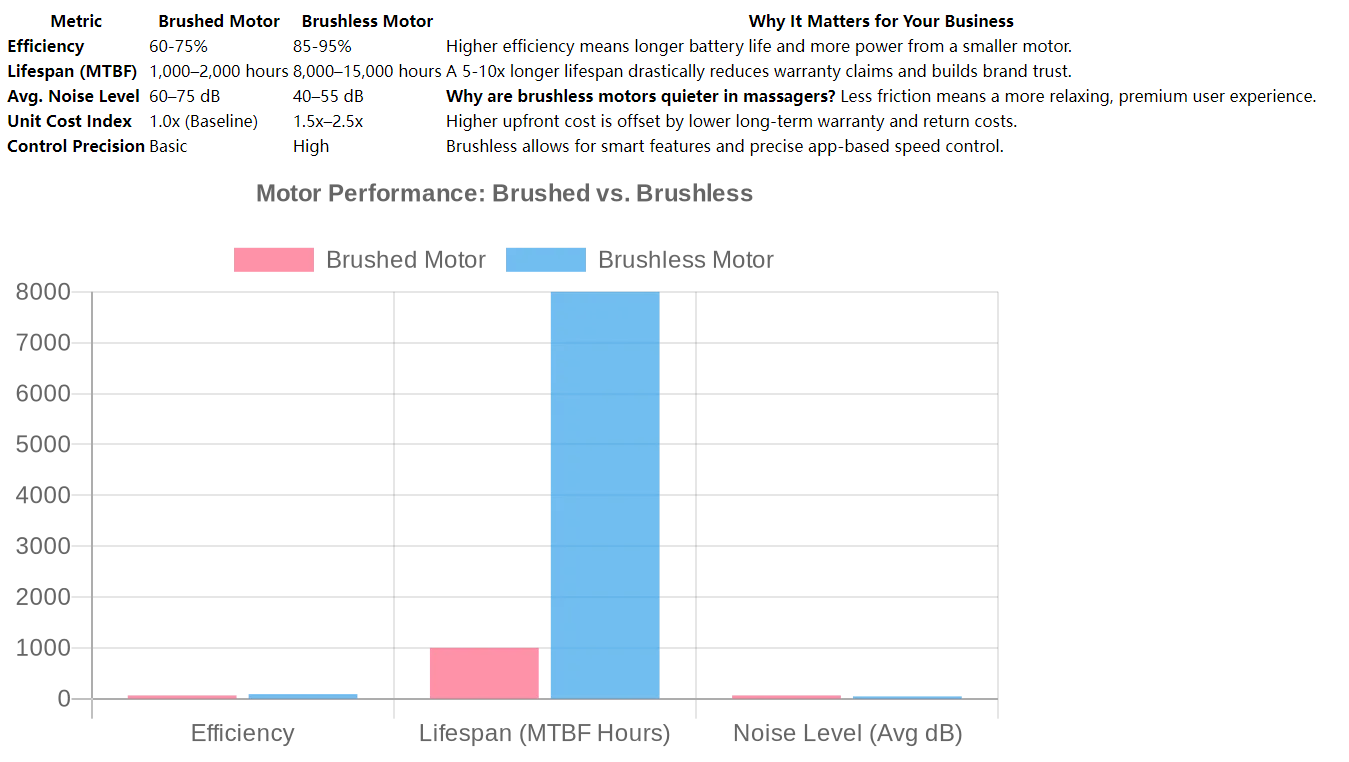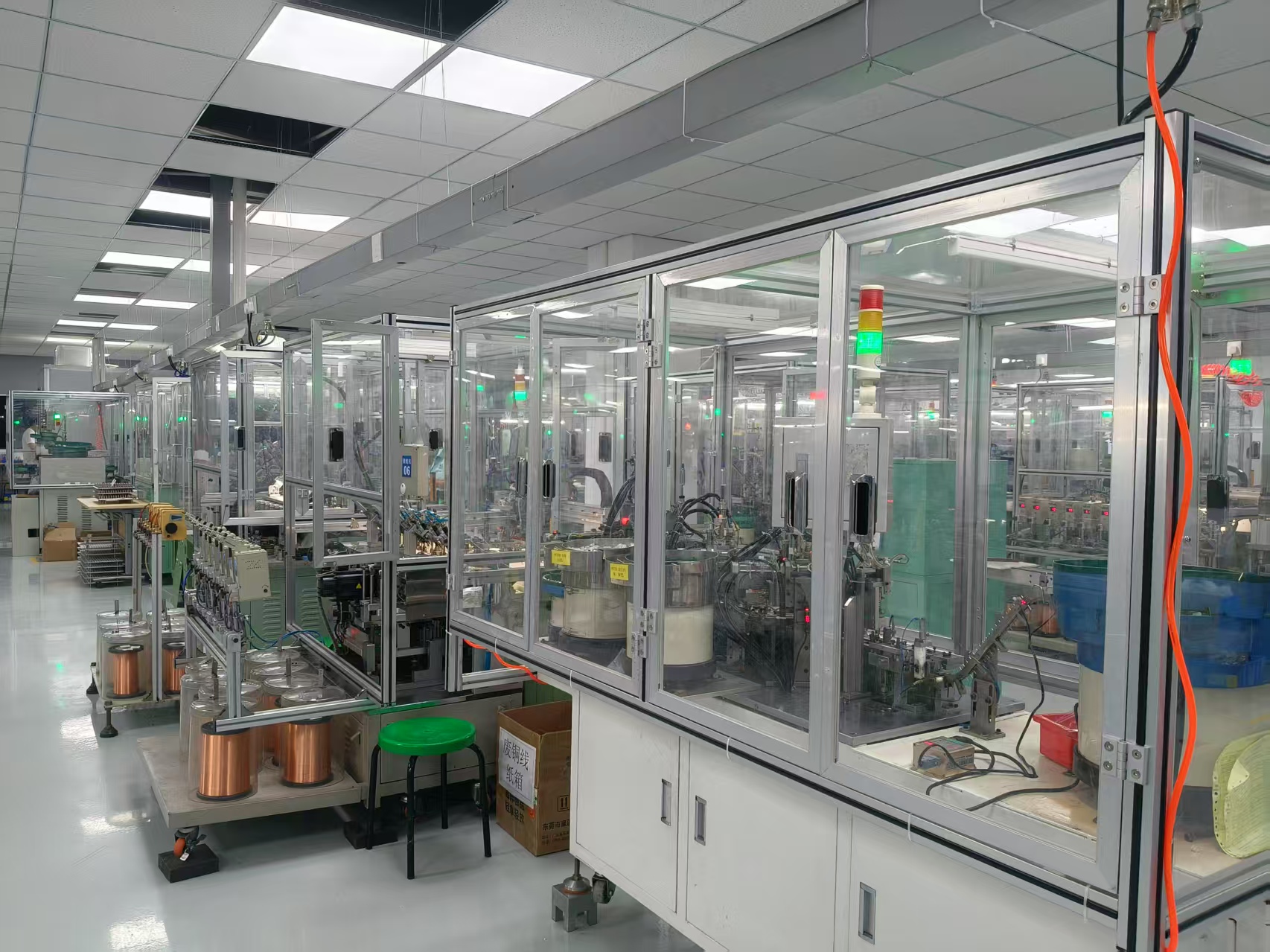Brushed vs Brushless Motor: A Massager Sourcing Guide
- By Grace
- Updated on
As a manufacturer, I see clients get stuck on one critical detail more than any other: the motor. You're looking at a spec sheet, and the choice between a brushed or brushless motor seems purely technical. But it's a business decision that can define your product's success, affecting everything from your unit cost to your customer reviews. The wrong choice when selecting a private label massager motor can lead to a warehouse full of returns and a damaged reputation.
We’ve spent years perfecting our massagers, and this choice is at the very heart of our design process. It’s not about which motor is "better" in a vacuum; it’s about which motor is right for your brand, your market, and your customer. Overlooking this is like building a premium car but putting a budget engine inside—your customers will absolutely notice.
Let's break this down into a clear, no-nonsense framework. By the end of this article, you’ll have the confidence to choose the right motor, optimize your costs, and deliver a product that builds a loyal following.
Why Is This Motor Choice So Critical?
What's the core issue here? It's a classic trade-off: short-term cost versus long-term value. A cheaper motor lowers your initial investment, but what if it leads to higher return rates and tarnishes your brand's reputation? This is a frequent—and costly—oversight.
I remember talking to the owner of a new e-commerce brand whose first product launch was nearly sunk by a flood of negative reviews about loud, failing motors. They chose a standard brushed motor to keep costs down, but the high failure rate after just six months completely erased their profit margins through returns and warranty claims. This is a story we hear far too often. The motor isn't just a component; it's the heart of the user experience and a key indicator of massager motor quality.

Here's the thing about a cheap motor: friction is the enemy. In a brushed motor, physical carbon brushes literally rub against a spinning part to create motion. This constant friction generates noise, creates heat, and causes wear and tear. Eventually, the brushes wear down completely, and the motor dies. For a customer, a product that becomes noisy or stops working within a year feels like a betrayal. The result? Negative reviews, costly returns, and damage to your brand that can take years to repair.
The Hidden Costs of a "Cheaper" Motor
The initial unit cost is just the tip of the iceberg. A motor with a high failure rate has a cascading negative impact on your business. You have to consider the total cost of ownership, not just the factory price.

What’s the Real Difference in Performance?
A physical therapist we partner with to develop clinical-grade tools explained it perfectly to me once. He said, "For my patients, a quiet and smooth device is part of the therapy. A loud, rattling massager creates tension, which completely defeats the purpose." That conversation is exactly why we always recommend a brushless motor for a massager positioned as "Pro" or "Premium"—the difference is something your customers will immediately feel and hear.

The core advantage of a brushless motor is its design. Instead of physical brushes, it uses a smart electronic controller to manage the motor's electromagnetic field. No parts rub together. This means the motor runs cooler, quieter, and with far greater efficiency. More power is converted into therapeutic motion, and less is wasted as heat. The result is a device that can deliver stronger percussion without sounding like a power tool. And with no brushes to wear out, What is the lifespan of a massager motor? For a brushless motor, it's easily five to ten times longer. That's the kind of reliability that lets you offer a longer warranty—a huge differentiator in a crowded market.
Head-to-Head: The Data Doesn't Lie
Let's put some numbers to it. The data we've collected consistently shows a clear divide between the two technologies.

So, How Do You Build a Smart Product Strategy?
The best strategy isn't always to choose the most expensive component. It's about matching the technology to your target market and price point. You wouldn't put a Formula 1 engine in a daily commuter car, and the same logic applies here.
We advise our partners to adopt a tiered product strategy. For your entry-level, cost-sensitive product line, a high-quality brushed motor is often a smart choice. It meets the needs of casual users and allows you to compete on price. But for your mid-range and premium "Pro" lines, a brushless motor is non-negotiable. It’s the key feature that justifies a higher price point, as customers in this segment are willing to pay more for durability, quiet operation, and superior performance. Offering both is often the best way to capture the widest market share. This is a key part of how to choose a motor for a private label massager.

Our Simple Framework for Motor Selection
Here is a simple framework we use with our clients. It aligns the motor choice directly with business goals and customer expectations for each market segment.

The choice in the brushed vs brushless motor massager debate is more strategic than technical. A great massager motor supplier will help you use the right technology for the right product. Brushless motors deliver the quiet power and longevity needed for a premium line, while quality brushed motors provide a reliable, cost-effective solution for entry-level markets. Building a successful product line is all about making smart, informed choices that create long-term value and brand loyalty.
Ready to discuss the right motor strategy for your next product? Contact our team. We can provide samples of both motor types so you can hear and feel the difference for yourself.




